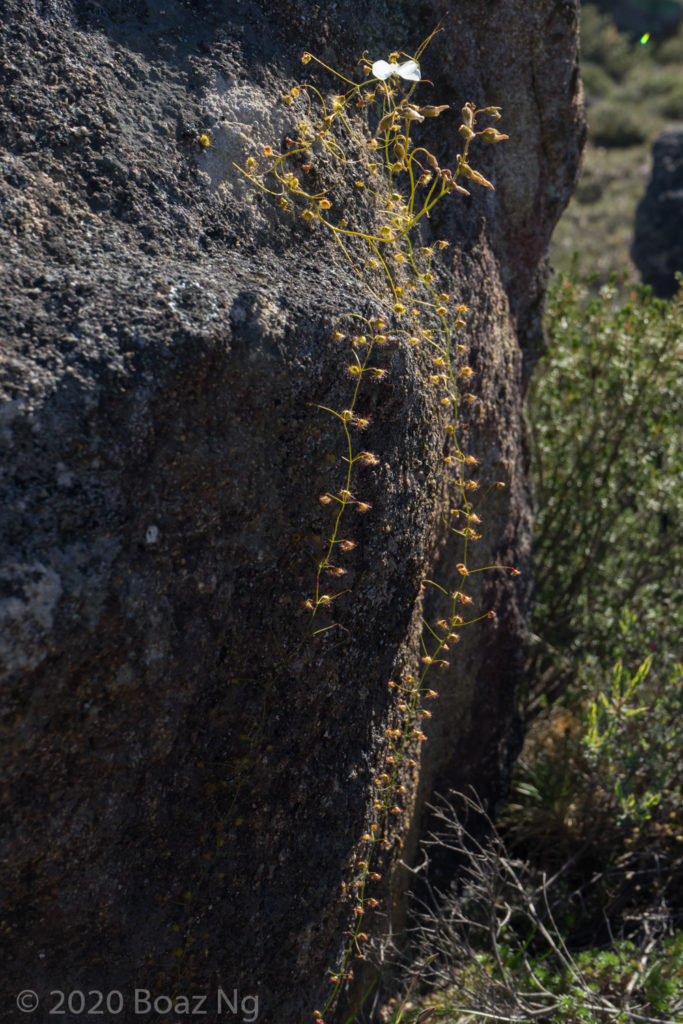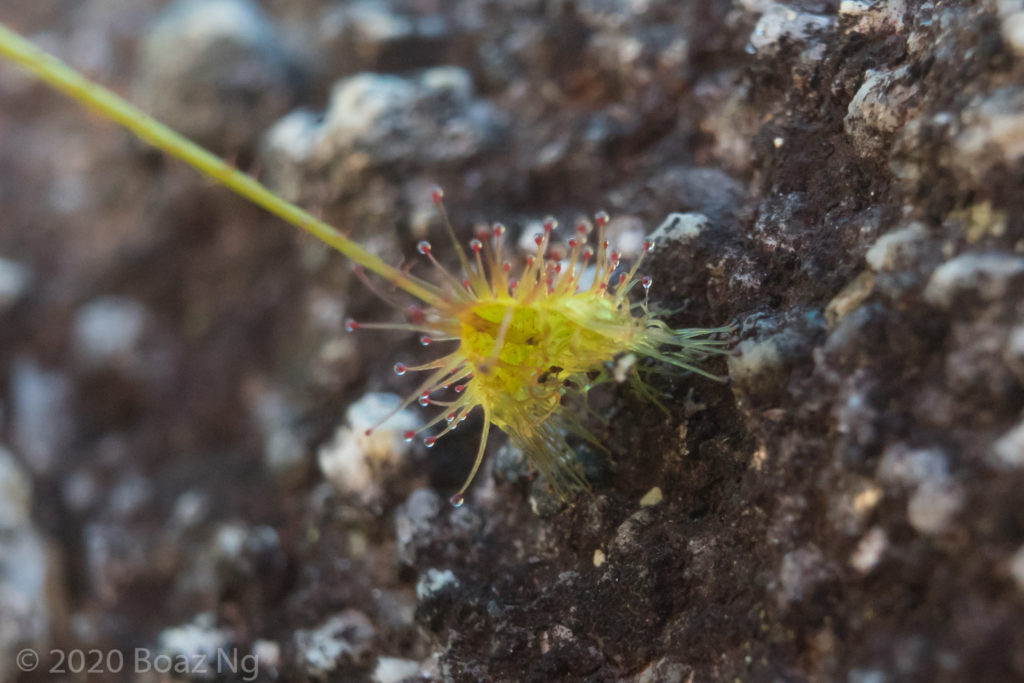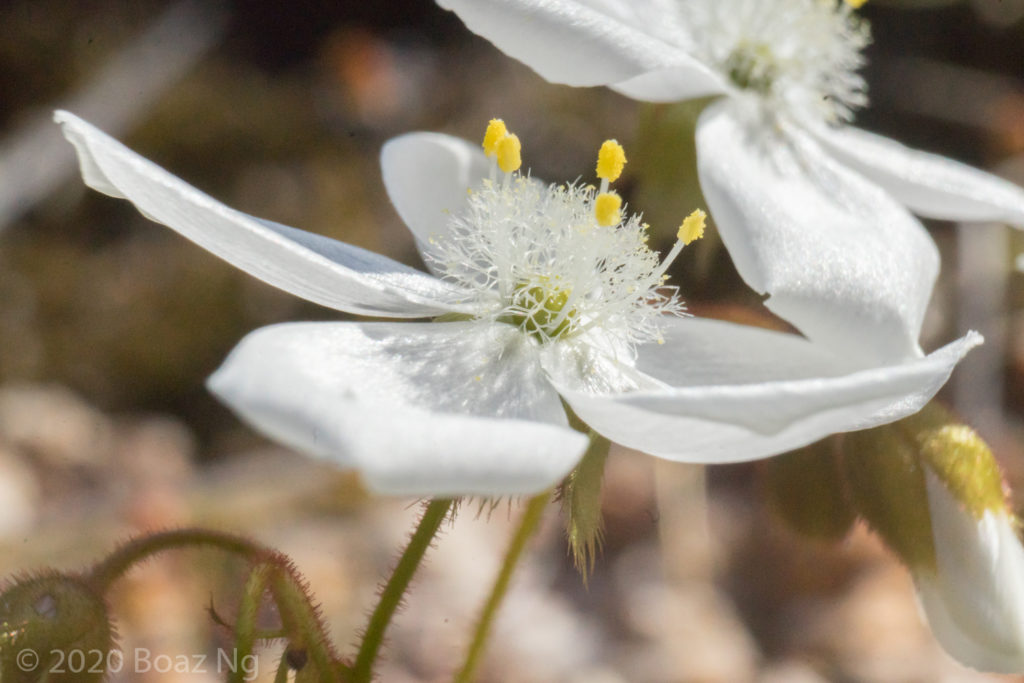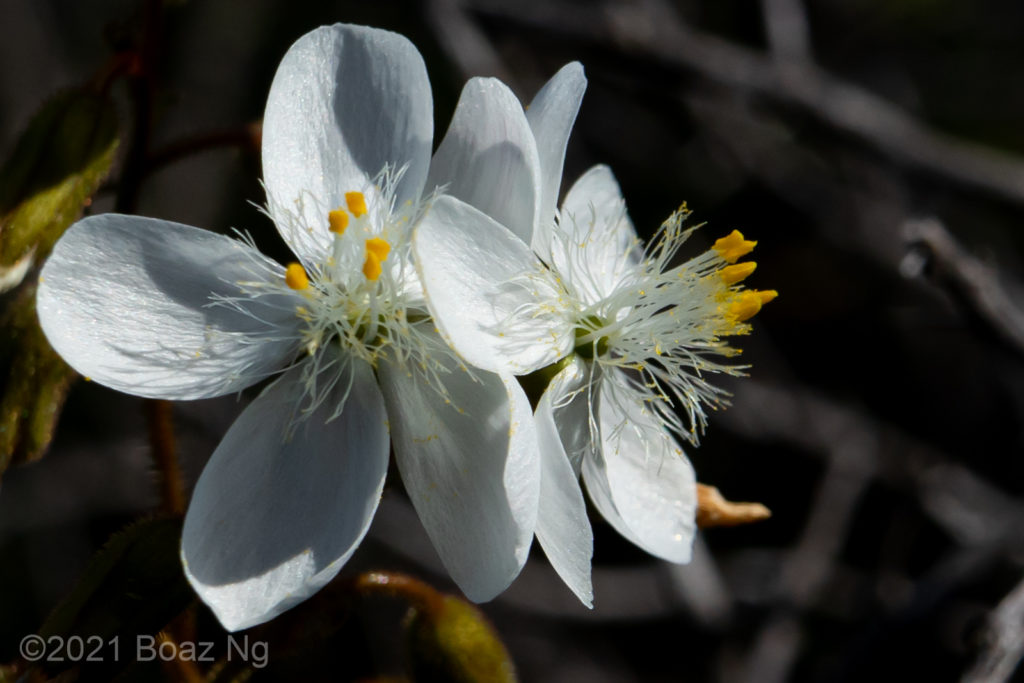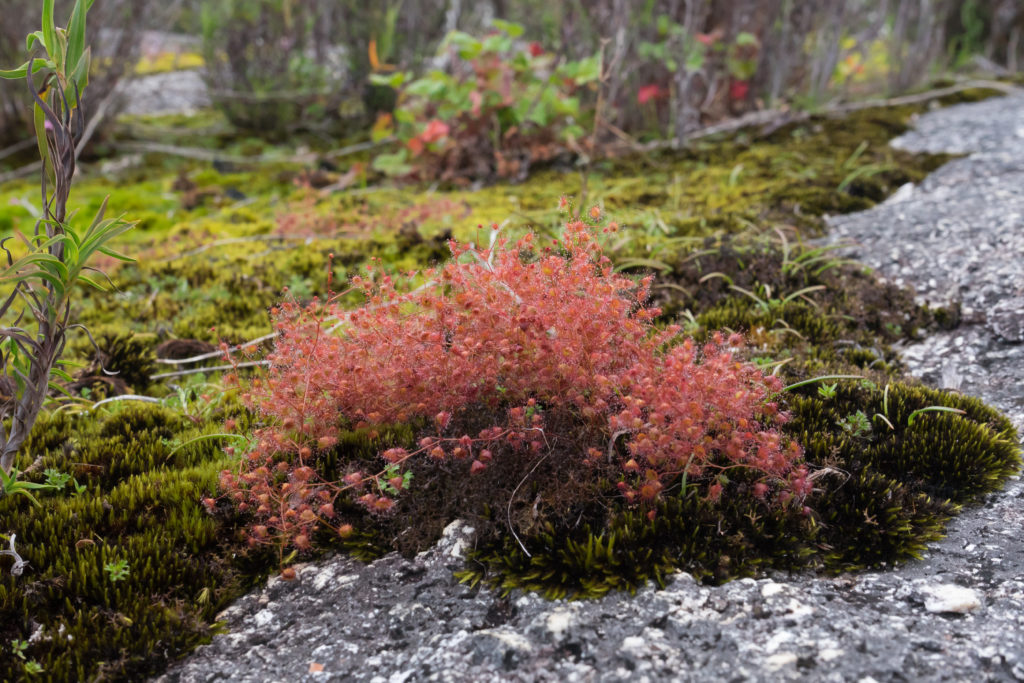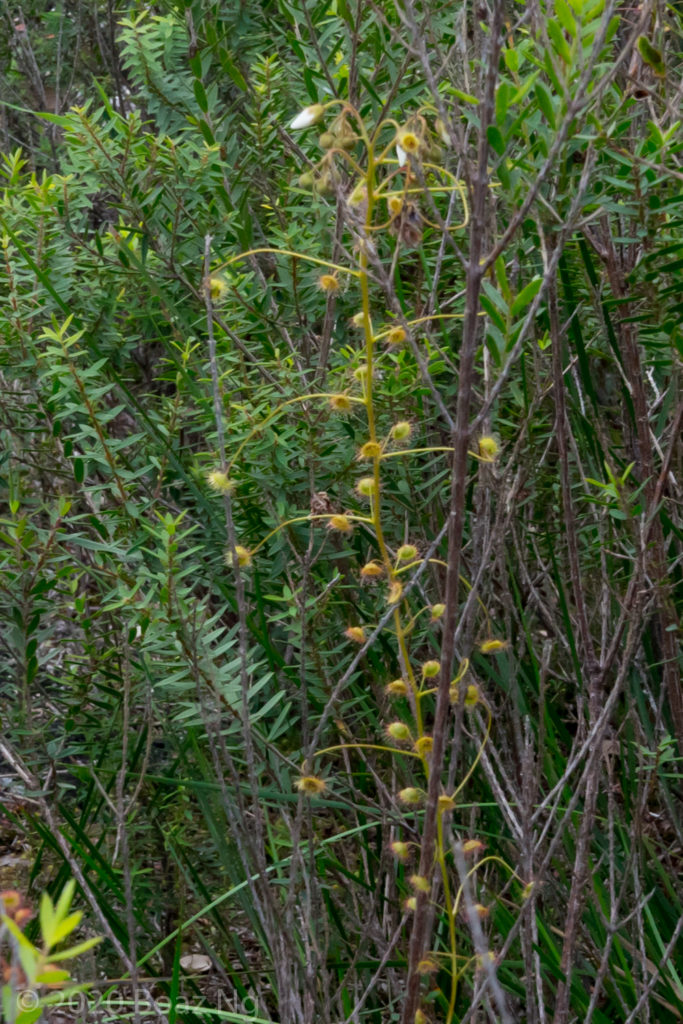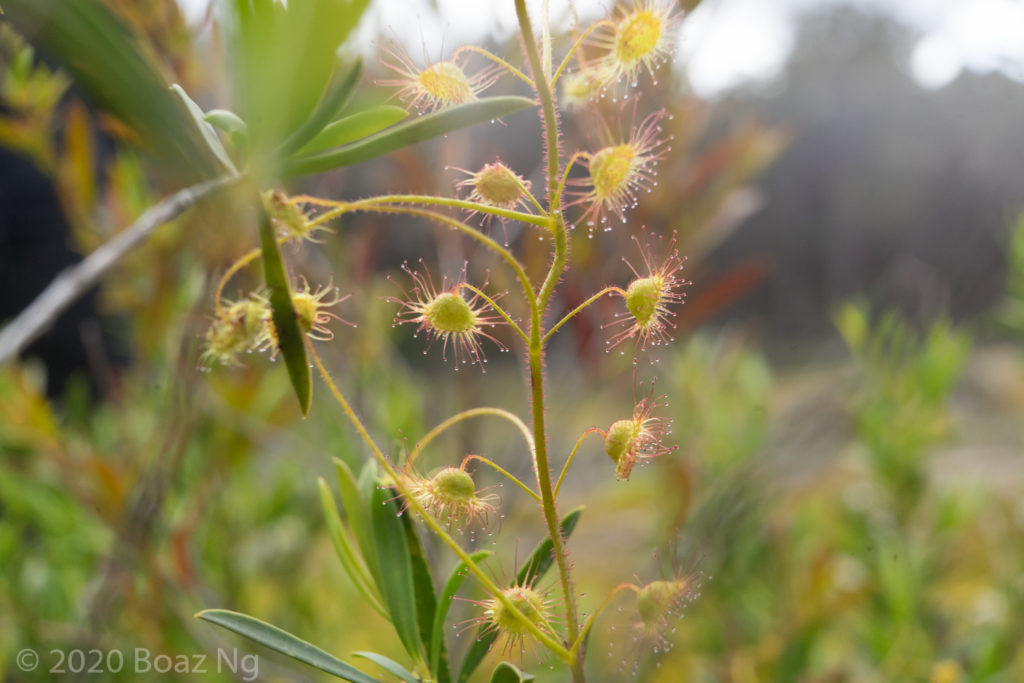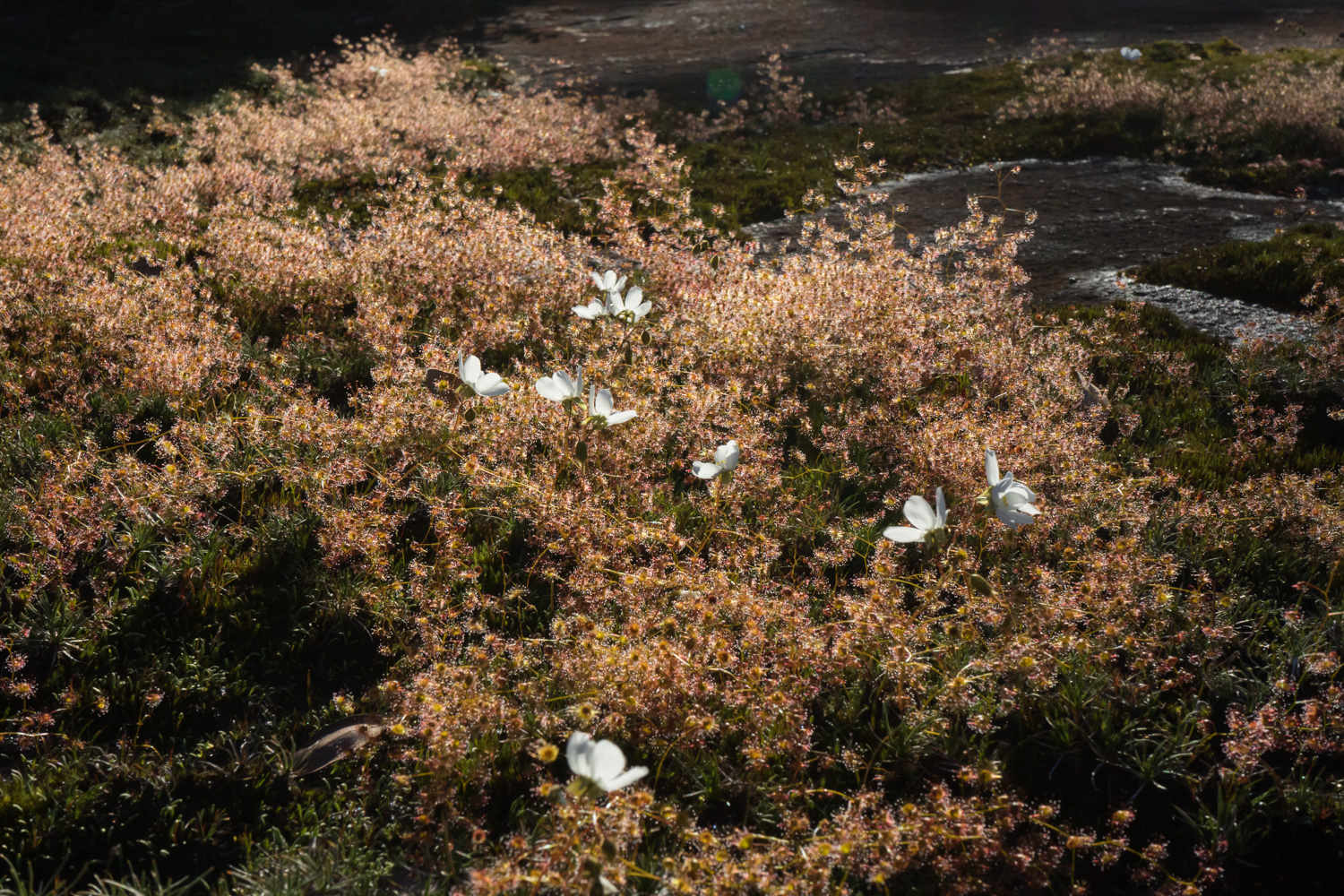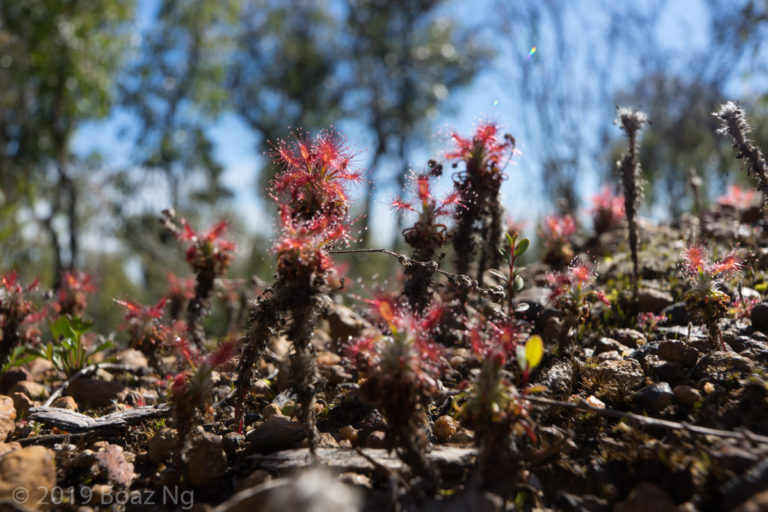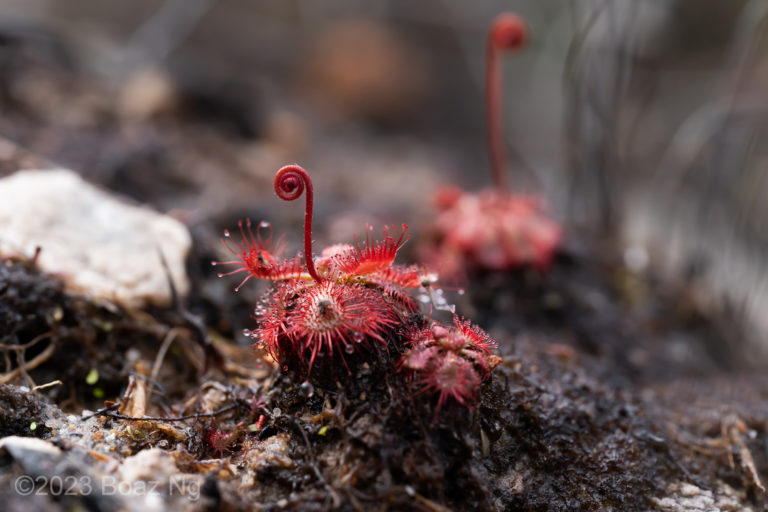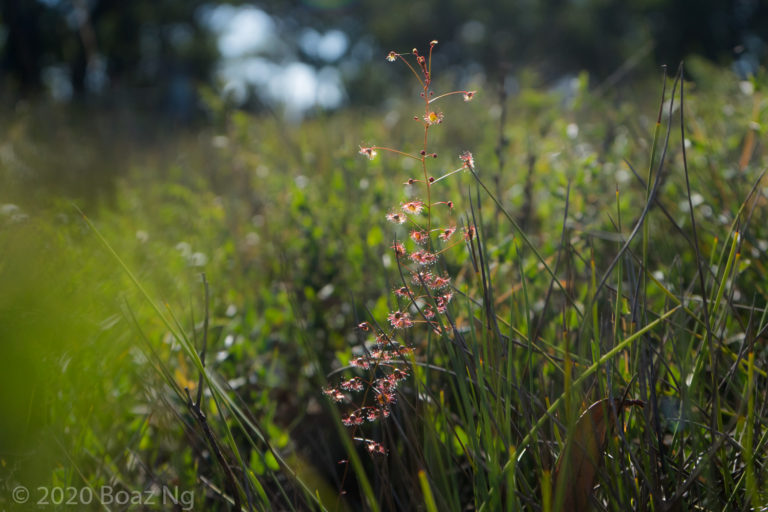Drosera macrantha is a scrambling tuberous species widespread across the south west of Western Australia. It is closely related to several other taxa which form a species complex. D. macrantha itself is widely variable and further reviews of the plants might reveal further taxonomic distinctions.
The species forms a long, scrambling stem that is covered in a moderately dense layer of glandular hairs in the upper sections. The lower portions of the stem are glabrous. The orbicular leaves are usually arranged in groups of three, with one leaf that has a particularly long petiole. The extended leaf, upon making contact with a surrounding support, grows auxiliary glands from the back of the lamina to firmly cement it in place. The flowers are white and are enclosed by hairy sepals. The styles are moderately to very divided and the pollen is bright yellow.
Drosera macrantha is closely related to D. indumenta, D. hirsuta and D. planchonii (and to some extent D. stricticaulis and D. eremaea). It is distinguished from D. indumenta in that the lower half of its major axis is glabrous (the hairs of D. indumenta extend to the base). It is distinguished from D. hirsuta by its moderately dense covering of hairs (that of D. hirsuta are very dense, with the sepals appearing furry). It is distinguished from D. plachonii by its larger size, more numerous flowers and usually denser covering of hairs (D. planchonii has few flowers and its hairs are always sparse). It is distinguished from D. stricticaulis by its scrambling nature (D. stricticaulis is self supporting). It is distinguished from D. eremaea by the presence of long hairs (the stems of D. eremaea are covered with minute glands). It can also be confused with the scrambling members of the D. menziesii complex but is easily distinguished by its hairy stems.
